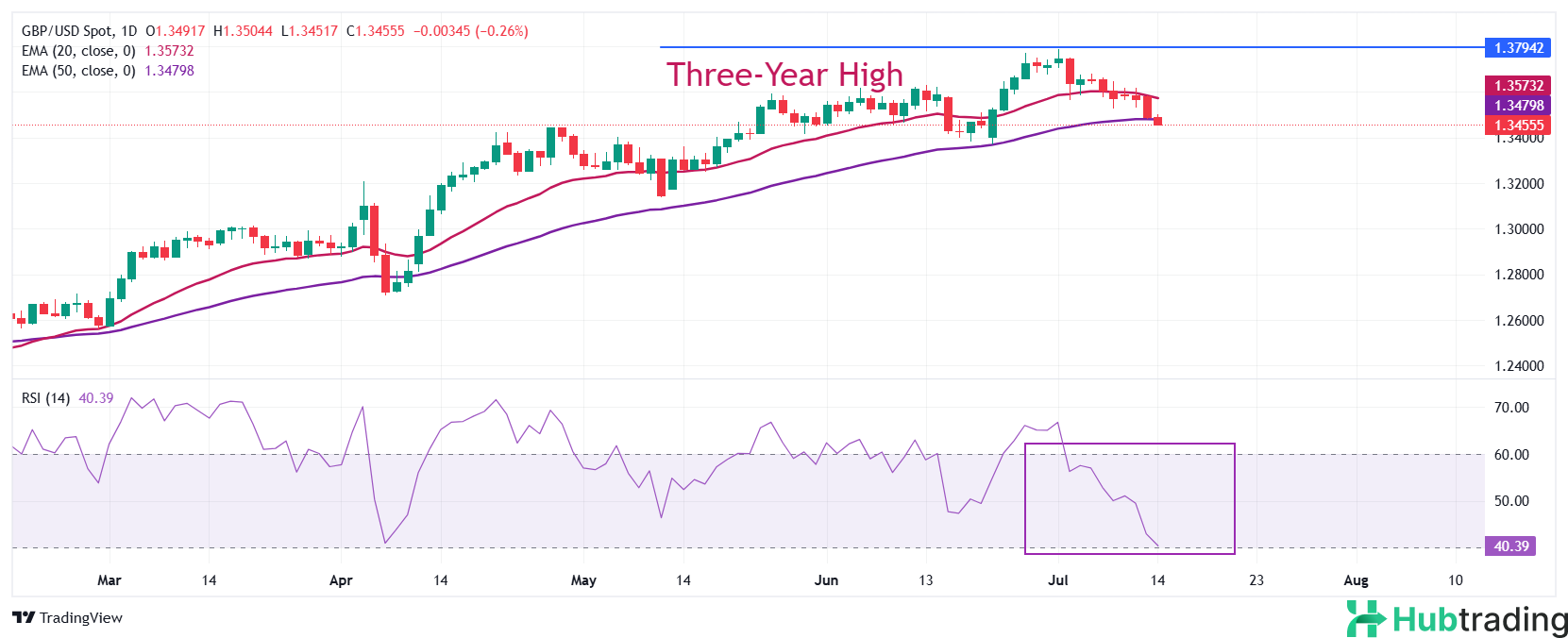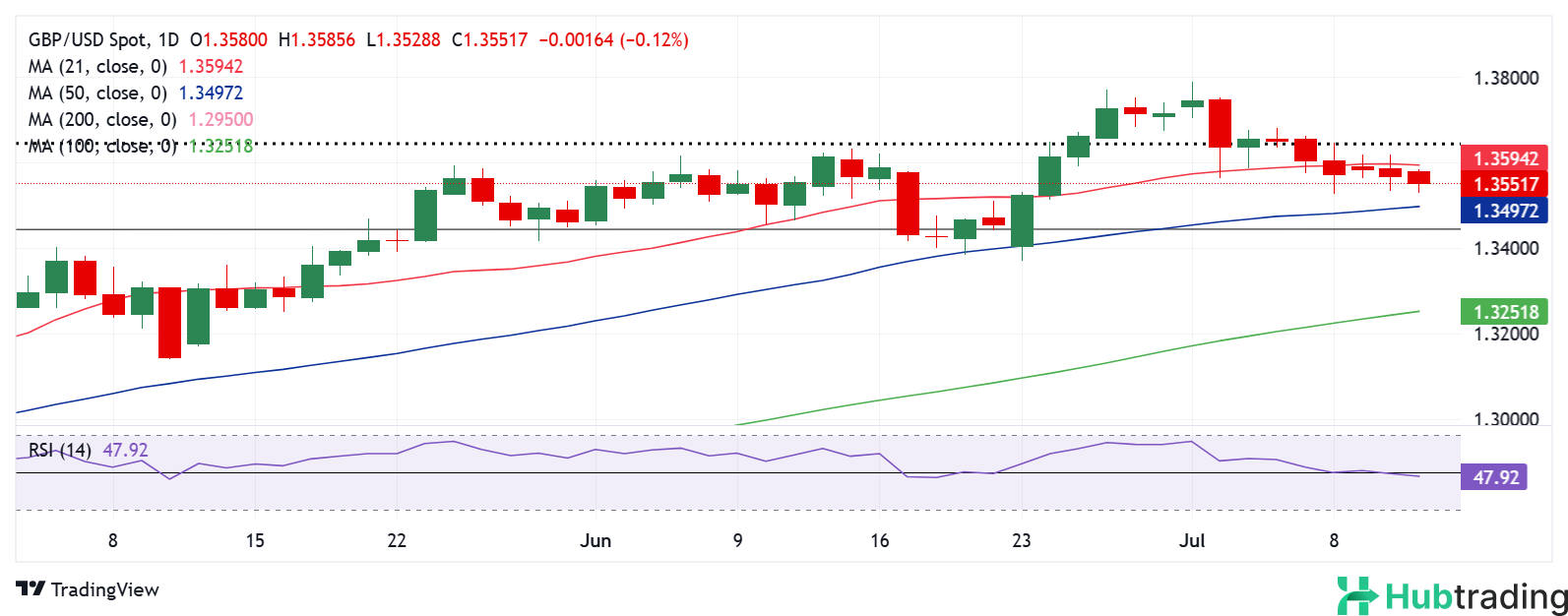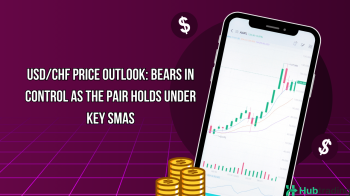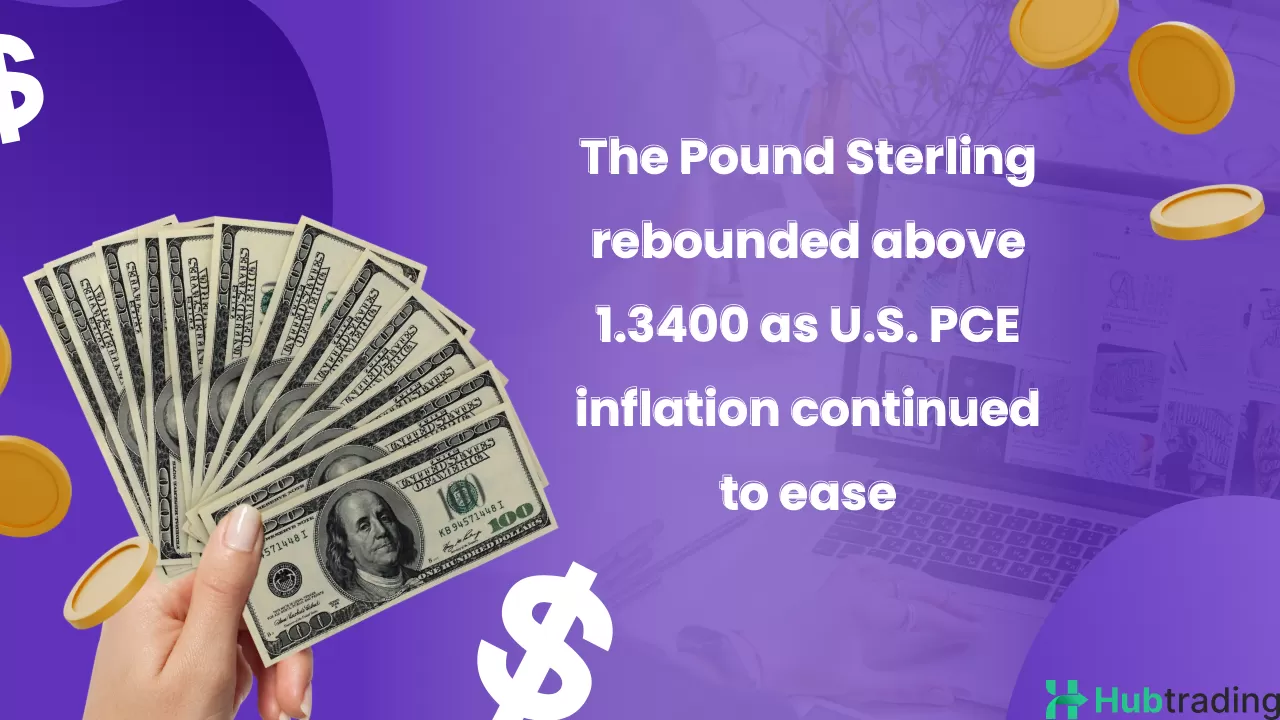-
The Pound Sterling (GBP) weakens significantly, hitting a three-week low against the US Dollar (USD) amid rising global trade tensions.
-
Market sentiment turns risk-averse following former President Trump’s announcement of steep tariffs on EU and Mexican imports.
-
Investors now focus on upcoming U.S. and U.K. inflation data, which could influence the next move in the GBP/USD exchange rate.
Pound Sterling Slides to Three-Week Low Against US Dollar Amid Trade Tensions and Inflation Concerns
The Pound Sterling (GBP) declined sharply against the US Dollar (USD) on Monday, falling toward 1.3450 during the European session—its lowest level in three weeks. The GBP/USD pair came under renewed pressure as investors shied away from risk-sensitive assets, reacting to growing market anxiety over escalating trade tensions between the United States and the European Union.
Over the weekend, former U.S. President Donald Trump announced a 30% tariff on imports from the EU and Mexico, citing their failure to reach a trade agreement during the 90-day reciprocal tariff truce. Trump further warned that any retaliatory measures from these partners would prompt even steeper tariffs, intensifying market risk aversion and boosting demand for the safe-haven U.S. Dollar.

GBP/USD Weekly Outlook: Sterling Remains Under Pressure Ahead of Key Inflation Data
The GBP/USD pair has entered a consolidative phase following its recent pullback from nearly four-year highs at 1.3789. Despite the pause in downside momentum, sellers maintain control as the U.S. Dollar continues to recover from multi-year lows.
The Greenback's resilience is supported by a fresh wave of safe-haven flows, driven by renewed trade war fears and expectations surrounding U.S. inflation data, due later this week. With CPI releases from both the U.K. and the U.S. on the horizon, the Pound remains vulnerable to further losses if inflation surprises to the downside or if geopolitical tensions escalate further.






